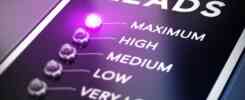A landing page is a standalone web page specifically created for marketing or advertising campaigns. It’s the page a user lands on after clicking an advertisement, social media post, or search result.
Generally, it intends to convert visitors into customers or leads by urging them to take a specific action, such as completing a purchase or subscribing to the newsletter. With this in mind, designing an effective landing page is crucial to the success of any marketing campaign.
Here are some of the top landing page tips and practices to help you design one that drives conversions and helps you achieve your marketing goals:
1. Establish A Clear Objective
Before you start designing your landing page, it’s essential to identify its primary goal, as this sets the foundation for all subsequent design and content decisions.
For instance, what do you want your visitors to do when they land on your page? Whether filling out a form, downloading an app, driving newsletter sign-ups, or purchasing a product, having a clear objective can help you create a focused and targeted design.
2. Prioritize Simplicity And Clarity
A clean, uncluttered design with enough white space can make it easy for visitors to easily understand your message and find the necessary information. As such, keep your landing page design simple by:
- Using a single, clear call-to-action (CTA)
- Limiting the number of navigation options and external links
- Breaking up long paragraphs with headings and bullet points
- Choosing a legible font and font size
- Using contrasting colors for background and text
A simple and clear landing page design can effectively guide your visitors toward the desired action, ultimately increasing the likelihood of conversion.
3. Craft A Compelling Headline
One of the first thing visitors see is the headline, which can make or break their decision to stay on your page. So, to help you create a compelling headline, it should:
- Be clear and concise, ideally within 5-10 words
- Convey the unique value proposition of your offer
- Use persuasive language that speaks directly to the visitor’s needs or desires
- Be large and prominent, making it the focal point of the page
Ultimately, a well-crafted headline can help capture your audience’s attention and set the tone for a positive user experience.
4. Leverage Social Proof
Social proof, such as case studies, reviews, or testimonials, can be a powerful persuasion tool, which can also help build your brand’s credibility.
To effectively use social proof on your landing page, consider the following tips:
- Use real quotes and authentic images
- Display testimonials or reviews from well-known clients or industry experts
- Include the number of satisfied customers or the number of product sales
- Add trust badges, such as industry awards, certifications, or media mentions
By incorporating social proof into your landing page design, you can create a more persuasive and trustworthy experience for potential customers, ultimately driving more conversions and building a stronger brand reputation.
5. Optimize Your CTA
The call-to-action (CTA) button is arguably the most critical element of your landing page. To maximize conversions, ensure your CTA button is:
- Highly visible and placed above the fold (i.e., visible without scrolling)
- Large and easy to click or tap on any device
- Designed with contrasting colors to make it stand out from the background
- Accompanied by clear and concise action-oriented text, such as “Download Now,” “Sign Up,” or “Get Started”.
Ultimately, optimizing your CTA can create a clear path for your visitors to take the desired action, boosting the effectiveness of your landing page.
6. Use Engaging Visuals
Including relevant images, videos, or other visuals can help build an emotional connection with your visitors, making your landing page more appealing.
Here are tips to help you select the right visuals for your landing page:
- Use high-quality images that are relevant to your offer and audience
- Ensure photos and videos are optimized for fast loading
- Avoid stock images that look generic or artificial
- Use captions or annotations to provide context for your visuals
Overall, incorporating engaging visuals can create a more memorable impression, making your landing page more successful.
7. Optimize for Mobile Devices
With over half of the web traffic coming from mobile devices, ensuring your landing page looks and performs well on smartphones and tablets is crucial. Here are some tips worth noting to create a mobile-friendly landing page:
- Use a responsive design that can adjust to different screen sizes
- Ensure all buttons and links are large enough to tap easily on a touchscreen
- Compress images and videos to reduce loading times
- Test your landing page on various devices and browsers to identify and fix any issues
Optimizing your landing page for mobile devices can make it more versatile, allowing you to cater to a broader audience and enhance all users’ experiences.
8. Keep Forms Short and Simple
If your landing page goal is to collect information from visitors (e.g., email addresses, phone numbers), you’ll need a form. However, to increase form completion rates, it’s best to:
- Only ask for the information you genuinely need; the fewer fields, the better
- Use clear and concise field labels
- Avoid using CAPTCHAs, which can be frustrating for users
It’s worth noting that short and simple forms can make it easier for visitors to complete the desired action, ultimately contributing to a more effective landing page.
9. Test And Optimize Continuously
Even after implementing these practices, it’s essential to continually test different variations of your landing page elements, such as headlines, CTAs, images, and copy, to identify which combinations work best for your audience.
You can also use analytics tools to monitor key performance indicators (KPIs) such as conversions, bounce rates, and time spent on the page. These insights can help you make informed decisions about your landing page design, enabling you to fine-tune and enhance its effectiveness over time.
Wrap Up
Designing a high-converting landing page is both an art and a science, requiring a combination of creativity and data-driven decision-making. By implementing these best practices, you can maximize your marketing efforts’ effectiveness and boost your overall conversion rates.



